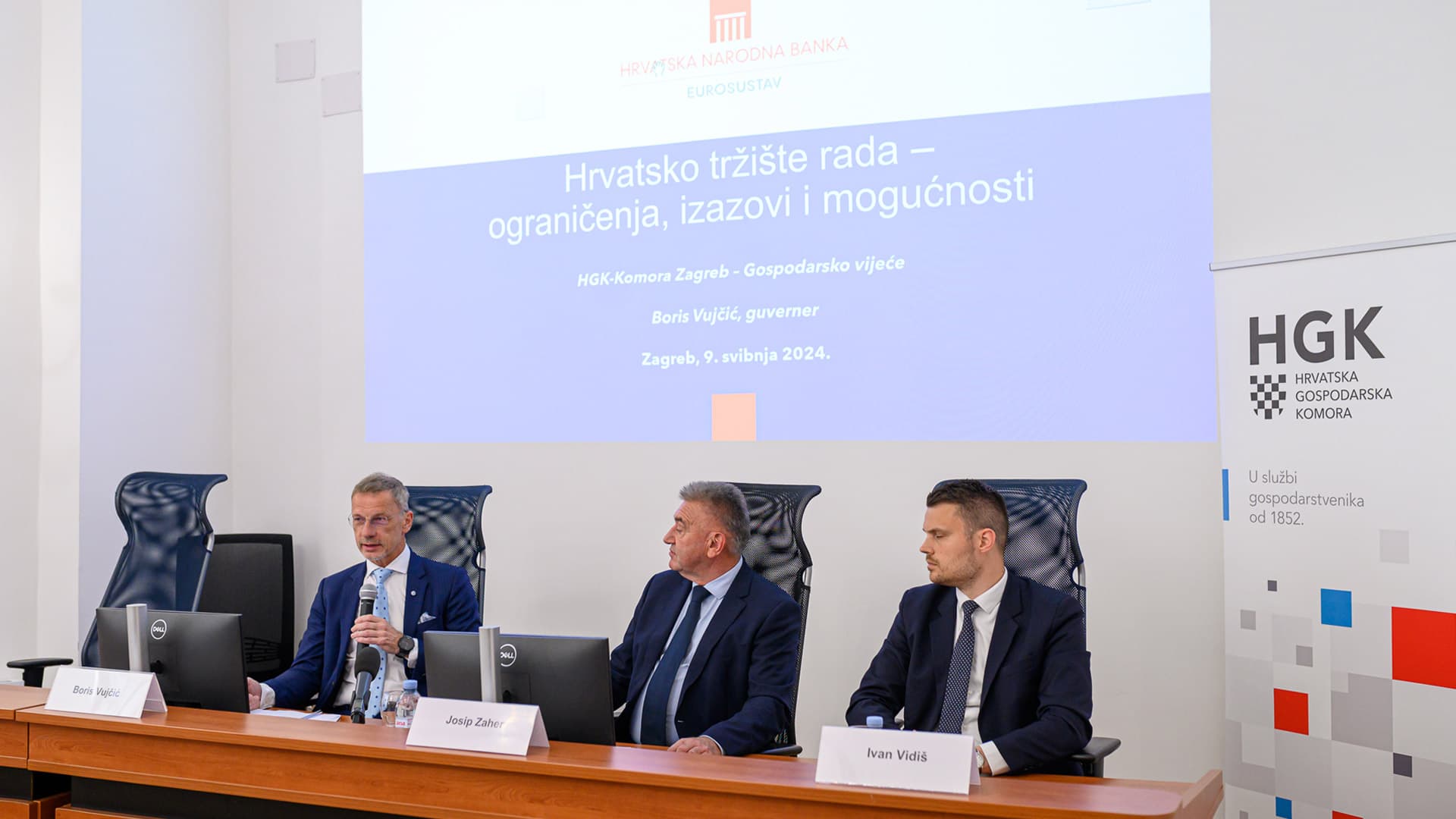
"We are now in a situation where we have a ten-year trend of continuous employment growth and reduction of unemployment and this trend will not stop quickly. Employment in 2022 exceeded the previous peak of 2008 (1.6 million) and continued to rise in 2023 and early 2024, while unemployment dropped below 100 thousand in mid-2023. Looking at projections for this year and the next two years, we expect that employment will continue to grow at the rates of 1.8%, 1.3% and 1.5%, and that unemployment will continue to fall from 6% in 2024 to 5.5%. Real wages, which over a longer period mostly followed productivity growth, have, however, already compensated for the fall caused by the rise in inflation in 2022," said Governor Boris Vujčić today during his presentation "Croatian Labour Market - Limitations, Challenges and Opportunities", delivered at the 2nd session of the Chamber of Commerce of Zagreb in the Croatian Chamber of Economy.
On this occasion, the Governor stressed that according to the April 2024 entrepreneur survey, the shortage of skilled labour remains the most important limiting factor for production. "It is not just a Croatian story and a Croatian problem – it is a European problem. The problem has been around for years and, according to projections, it will remain. It is good for Croatia that labour participation has increased by eight percentage points in recent years, and that, according to the latest data, the activity rate of the population aged 15-64 is 70%. However, it is still below the EU average, where the average activity in the labour market is 75%. If we could get those 5% more people on the job, that would mean 120,000 more people on the job market, so we need to think about policies that would activate that part of our population," the Governor explained.
Commenting on the projections of the United Nations that predict a strong depopulation trend until 2100, Vujčić said that Croatia has been in a period of population decline for a long time, practically for three decades. "Parallelly, life expectancy in Croatia is increasing, so things have to change in terms of the duration of working life. Accelerated changes in the age structure of the population are occurring in parallel with population decline. The population aged 25-64 could decrease by about 400,000 people in the next 20 years, which are very large numbers for Croatia. Some projections say that due to rising life expectancy and falling birth rates, the EU will need about 100 million new foreign workers in the period to 2050," the Governor said, adding that according to the recently released OECD Economic Outlook, 2023 was a year of extremely large migration inflows in some OECD economies, reflecting also an increase in global humanitarian crises. The paper assesses that increased labour supply helps to alleviate the strained supply-demand relationship in labour markets.
"Recruitment of foreign workers addresses to some extent the shortage of skilled labour. According to our estimate, there are about 100,000 of them in Croatia and their number is rapidly increasing. In this context, it has to be said that analytics shows that foreign workers are starting to contribute to potential GDP growth," the Governor pointed out, noting that policies aimed at increasing the participation of the domestic workforce should be continued, such as extending working lives, lifelong learning, including retraining, social programs, alternative working arrangements such as a four-day work week, teleworking, multi-employer work, and additional incentives and facilities for investments in research and development, including automation and related activities.
